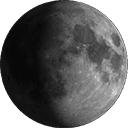The richest superclusters – I. Morphology
Author(s): Einasto, M.; Saar, E.; Liivamaegi, L. J.; et al.
Source: ASTRONOMY & ASTROPHYSICS Volume: 476 Issue: 2 Pages: 697-711 DOI: 10.1051/0004-6361:20078037 Published: DEC 2007
Context. Superclusters are the largest systems in the Universe to give us information about the formation and evolution of structures in the very early Universe. Our present series of papers is devoted to the study of the morphology and internal structure of superclusters of galaxies.
Aims. We study the morphology of the richest superclusters from the catalogs of superclusters of galaxies in the 2dF Galaxy Redshift Survey and compare the morphology of real superclusters with model superclusters in the Millennium Simulation.
Methods. We use Minkowski functionals and shapefinders to quantify the morphology of superclusters: their sizes, shapes, and clumpiness. We generate empirical models of simple geometry to understand which morphologies correspond to the supercluster shapefinders ( Appendix A).
Results. Rich superclusters have elongated, filamentary shapes with high- density clumps in their core regions. The clumpiness of superclusters is determined using the fourth Minkowski functional V-3. In the K-1 – K-2 shapefinder plane the morphology of superclusters is described by a curve which is characteristic of multi- branching filaments as shown by our empirical models. We found several diff. erences between observed and model superclusters. The curves of the fourth Minkowski functional V-3 for observed and model superclusters have di. fferent shapes indicating that their structure is di. erent. The values of V-3 for the supercluster SCL126 (the Sloan Great Wall) show that this supercluster has a very high density core which is absent in other superclusters. The values of the shapefinders H-1 – H-3 and K-1 and K-2 for observed superclusters have much larger scatter than for model superclusters. The di. erences between the fourth Minkowski functional V-3 for the bright and faint galaxies in observed superclusters are larger than in simulated superclusters.
Conclusions. Our results show how the Minkowski functionals and shapefinders can be used to describe the morphology of superclusters: their shapes, sizes and clumpiness. The shapes of observed superclusters are more diverse than the shapes of simulated superclusters. The larger scatter of the fourth Minkowski functional V-3 for the bright and faint galaxies for observed superclusters compared to simulated superclusters is an indication that the clumpiness of bright and faint galaxies in models does not reflect well the clumpiness of di. erent galaxies in observed superclusters. Our results suggest also that the volume covered by the Millennium Simulations may be too small to properly describe the large morphological variety of superclusters.






